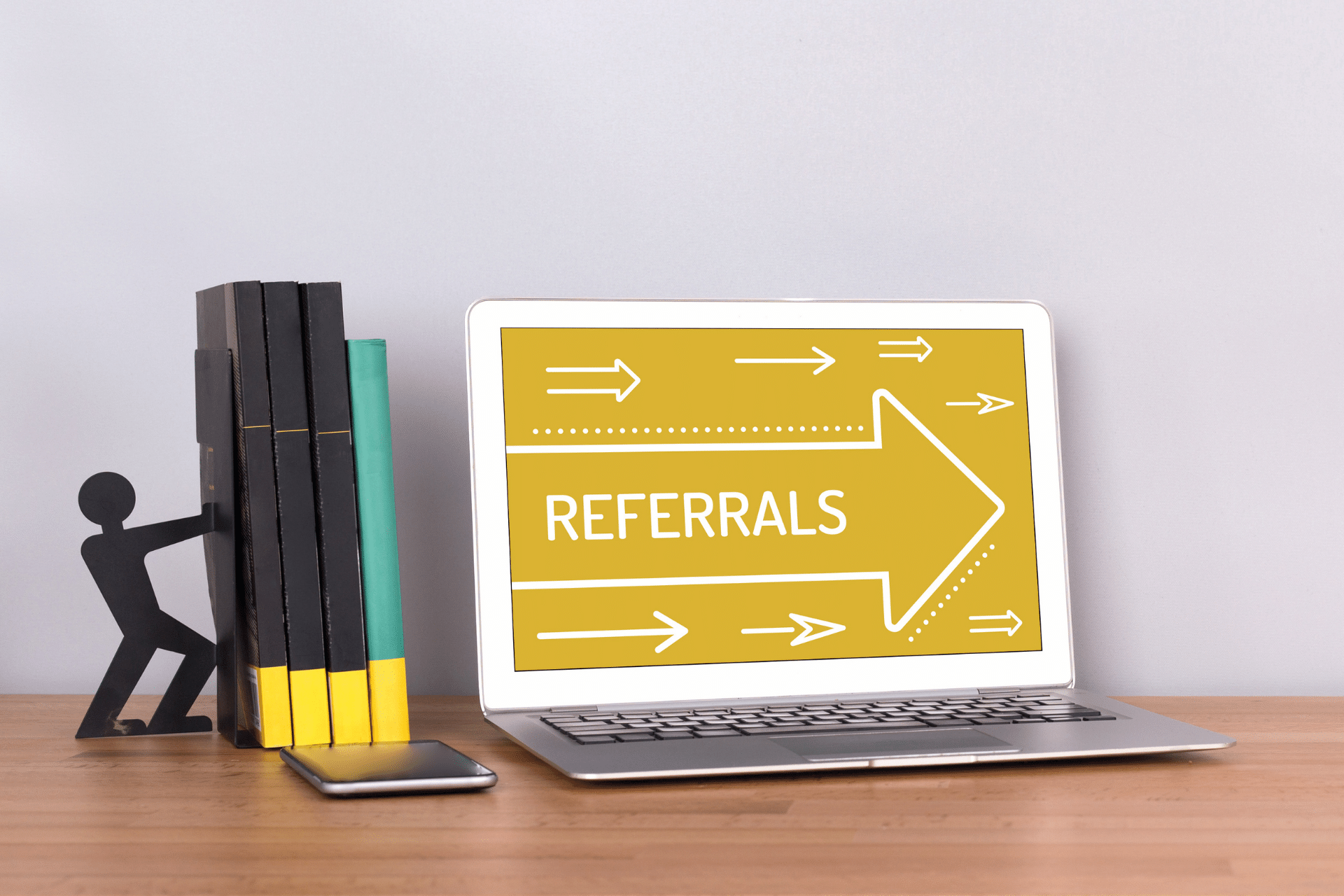Build your customer referral program without the dev time
Sign up for a free trial of GrowSurf to lower your customer acquisition costs, increase customer loyalty, and save gobs of time.
Launch Your ProgramRetention marketing is something that every business should aspire to. It only makes sense that once you have put in time and effort to acquire a customer, you should make every effort to retain them. After all, a customer who is already purchasing or working with you is a far easier customer to encourage to make another purchase than one who has yet to purchase from you. According to Harvard Business Review, acquiring a new customer can cost 5 to 25 times more than retaining an existing one.
It is, therefore, surprising that most marketing teams allow customer retention to slip in favor of finding new customers. Closing new clients feels better, but retained clients make for happy balance sheets. As Adobe CEO Shantanu Narayen puts it, "If you are not retaining your customers, even at current revenue rates, then you have to run faster and faster and faster" to keep acquiring new ones.
Retention marketing is the art and technique of retaining customers who have already purchased from you. They've taken the first big step and have committed some of the valuable cash to your product or service. Now it only makes sense to see if they'll go further with you, rather than wander elsewhere. Returning customers almost always make more purchases from companies over time, this leads to reduced operating costs and, importantly, satisfied repeat customers are the ones most likely to refer you to others. In fact, 92% of consumers trust referrals from people they know over any other form of advertising.

On paper this all sounds like a no brainer, in figures it does too. "A 5% increase in customer retention produces more than a 25% increase in profit," says Fred Reichland in Bain's Prescription for Cutting Costs report. The reality is that there are instances where this increase in profit can rise to 95%. Companies that work to retain their customers massively benefit from the process. Furthermore, another Bain study shows that an engaged customer spends 67% more in months 31-36 of their relationship with a business than they do in months 0-6, highlighting the compounding value of retention efforts.
“Chick-fil-A has so effectively mastered the economics of loyalty it can afford to pay store operators double or triple its industryís average compensation and still give 10% of profits to charity” Fred Reichland
It only makes sense to have a retention strategy, but few companies do. The reasoning is almost always down to taking customers for granted. These businesses feel that what they offer is priced right and is the right product for the customer (after all they already purchased it once) but fail to realise that the experience the customer has with the company actually has a higher rate of retention than either price or product.
Finding out how many retained users you have, how you are retaining them, and whether your strategies in retention marketing are working comes down to the metrics that you track and then how you act on them. We'll investigate the metrics best suited to retention marketing shortly, but a good place to start is with the AARRR metrics or Pirate metrics. These metrics are the blueprint ones to track for businesses looking for growth opportunities. Businesses that ignore them do so at their own expense. Price Intelligently states that improving monetization or retention by just 1% is 2-4x as impactful on your bottom line than improving acquisition by 1%.
One could simply say more clients or customers retained equals more revenue which equals no profit, and then leave it there. That might be enough for some people but there’s more to the benefits behind retention marketing than straight up revenue generated.
Keep customers, make more money.
While acquiring new customers is important for growth, retaining existing customers is key to driving sustainable revenue and profits. As a Harvard Business Review research shows, a 5% increase in customer retention can boost profits by 25% to 95%.
Your current customer base is easier to sell to than new ones.
In their book Customer Loyalty, Jill Griffin found that, “the probability of selling something to a prospect is only about 5-20%, while the probability of selling something to an existing customer is 60-70%.” Businesses are far more likely to be successful when selling to their existing customers.

The more a customer purchases from you, the more likely they are that they’ll come back again.
Once a customer has purchased from you there’s a chance that they’ll return again. If they do return (and therefore become a retained customer) then they are even more likely to purchase a third, fourth etc time again in the future.
Costs are lower working with current customers.
Acquiring new customers is expensive, with costs rising nearly 50% for both B2B and B2C companies over the past 5 years according to SaaSquatch data. In contrast, retaining existing customers requires far less spending on advertising, sales, and marketing efforts. During the 2008 financial crisis, Forrester research found that it costs five times more to acquire a new customer than to keep an existing one.
People who have bought before are more likely to spend more next time.
Retaining customers doesn't just reduce acquisition costs - it also increases customer lifetime value (CLV). Research from Monetate shows that in e-commerce, a customer who has made multiple purchases is worth 5 times more than a first-time visitor. By focusing on retention, you maximize the value extracted from each hard-won customer.
When happy customers keep purchasing from you they’re the most likely group to refer new customers to you.
While retention marketing doesn't directly acquire new customers, it fuels powerful word-of-mouth marketing that drives referrals. Nielsen data shows that 92% of consumers trust recommendations from friends and family above all other forms of marketing. The more customers you retain, the larger your army of brand advocates becomes.

Sign up for a free trial of GrowSurf to lower your customer acquisition costs, increase customer loyalty, and save gobs of time.
Launch Your ProgramWe’re all agreed that retention marketing makes sense, so now it is time to strategize. Take the time to consider each individual strategy, how they would impact your business and, most importantly, how they would benefit your customer.
When someone interacts with your business they want to have the feeling that they are doing so on a personalized level. They want to feel that they’re being spoken to on an individual basis, by a real person, and that they are valued by your business. Nobody wants to feel like they’re just a number in your accounts book.
Encourage people to return to your business by creating short term, individualized, personal deals. Not only do these act as incentives (even if just to visit and browse your site) they will often end up making impulsive purchases. In a study conducted by Coupons.com and Claremont Graduate University, it was found that when customers receive coupons it genuinely triggers an oxytocin reaction (the happiness drug that the body naturally creates).

Amazon is a well known user of personalized deals, sending emails that follow up on recent browsing history, product deals based on purchase history and suggested products.
Everyone likes to be part of the in-crowd, and therefore feel important. Exclusivity plays on that exact emotion by offering deals, discounts or offers in a way that only allows certain customers (specially selected customers) to take part in them. Many companies nurture this emotion by creating loyalty programs or a membership platform. When customers take part in these schemes they are many times more likely to return and purchase from you again.
Looking at exclusivity from a B2B standpoint, a business might consider offering wholesale prices on their products in exchange for larger scale discounts or even allow specially selected “partners” to participate in an early stage exclusive product before it goes to mass market. By making these deals limited in their volume, or for a limited time, businesses can also leverage the scarcity principle. The scarcity principle (another of Dr Cialdini’s Principles of Persuasion) plays on the human desire to not miss out on opportunities, otherwise known as FOMO (fear of missing out).
Email marketing is a tricky strategy to master in modern day marketing as most inboxes are inundated with marketing emails on a daily basis, many of which can be deemed to be spam. That said, if you are able to position yourself as a company or brand that people genuinely want to hear from then you’ll have a far higher open rate and interaction rate.
As always, it’s all about providing value. Sending an email full of sales talk and product/service descriptions goes nowhere, whereas letting them know you’ve published a recent article that would be really beneficial for them to read, that provides value.
The very design of referral marketing is to encourage people to come back to your business so that they can refer new prospects to you. When a current customer is actively participating in a referral scheme they are a retained customer. The chances of them purchasing a different product from the one that they are sending referrals to is extremely low.

By creating a solid referral program, your business will not only have a program that encourages new customers to purchase your products and services, but also retains your current customers. The trick is to have the program set up as soon as possible (to maximize potential participation) and to ensure that the system in place is robust enough to scale alongside your growth. It's certainly worth investing in a professional system such as the referral software offered by GrowSurf. According to Bain & Company research, the average first-time shopper will refer 3 people to a site, while after 10 purchases, that shopper will have referred 7 people on average.

Sign up for a free trial of GrowSurf to lower your customer acquisition costs, increase customer loyalty, and save gobs of time.
Launch Your ProgramTreat your customers well and they'll return to you time and time again. It's why TGI Fridays greets you professionally and aggressively sings you Happy Birthday, that's their version of great customer service in the hope you'll return in the future. As Customer Thermometer data shows, 68% of customers leave if they think a company is indifferent to them, so prioritizing exceptional service is key for retention.
When working with other businesses this comes in many forms, in the physical realm it might be wining and dining them in a decent restaurant, sending them thank you notes and gifts, or genuinely just checking in with them without the pushing of sales. In the digital sphere, support and help pages come into their own, along with personalized communication and self-service options. As Monetate's research shows, 78% of shoppers will only act on an offer if it has been personalized to their previous interactions with the brand.
Customers need to be able to feel that they can answer their own questions, and that someone will be there to support them if they can’t. That could be through a phone line, a physical presence or via live chat. There are myriad ways of delivering customer service, but it takes dedication to provide exceptional customer service.
Your retention marketing strategy might be as simple as prioritizing and restructuring your business so that it has more focus on retaining clients. As mentioned in the introduction to this article, many businesses simply don't prioritize retaining customers. By upping retention in the hierarchy of marketing focus, there's a chance that you'll be able to increase your numbers automatically.

Restructuring the business can be a more drastic approach but if you feel that retaining clients will drastically increase your revenue generated then it may well be a worthwhile process. This might include the literal restructuring of job roles in the business with more focus on account management and customer success rather than straight up sales people.
This comes down to the metrics that you’re tracking and how you’re going about reporting on them. Simple acquisition is a straightforward metric to measure, new customers arrive and have revenue attributed to them. Instead, it’s worth focusing on the lifetime value of your customers vs how much it might cost to acquire a new one. Customers no longer are focused entirely on price, yes, it is still a major factor in decisions but so are loyalty, customer service, and all of the above.
Judging lifetime customer value isn't easy, you're normally having to forecast and make some educated predictions on what that value might look like. Being realistic with these figures is important. Once the values are in place appropriately, this metric is a far better measure of projected revenue earned rather than predicting one-off sales.
To calculate customer lifetime value, you can use the formula: Average Customer Value x Average Customer Lifespan. For example, if the average customer pays you $50 per month and maintains their subscription for 2 years, their lifetime value would be $1,200. Tracking this metric allows you to invest more into retaining your highest-value customers.
We've covered what retention marketing is, why you should consider it, and typical strategies that could be implemented. Now it's time to investigate the actual campaigns that could be launched in order to retain customers. In order to be most successful, you'll want to divide your customers into smaller groups through a process of user segmentation.
Segmentation allows you to send the right message to the right customer at the right time based on their behaviors and preferences. Highly segmented campaigns see much higher engagement than generic bulk sends.
Onboarding Campaigns: First impressions count, and, as they say, you only get to make them once. It's incredibly important that you take the opportunity to make your mark and stand out from the crowd. The time when new customers are getting to know you is important and sets the tone for the entire rest of the relationship. Effective onboarding campaigns can include welcome emails with additional resources, product tours, and helpful content to ensure a smooth initial experience.
Active Customer Campaigns: These are the customers who are actively interacting and purchasing from your company. It's easy to forget them because they are doing what you want them to do. It's because of this, and your desire for them to continue doing so, that a campaign should be launched to interact and connect with them on a personal level. This could involve exclusive offers, loyalty program updates, or simply checking in to ensure they are getting maximum value from your product.
Lapsing Customer Campaigns: The customers who were active but are now, apparently, coming to the end of their buyer journey. If you're a business that offers free trials or 3/6/12 month subscriptions, these are your customers coming to the end of the cycle. Left to their own devices, many may lapse and therefore no longer be a customer. Campaigns should be launched with the aim of reminding them of your services and educating them on the benefits of continued use through winback offers, product updates, or case studies highlighting successful long-term customers.
Re-Engagement Campaigns: Just because a customer hasn't engaged with you or purchased in the last 12 months or so doesn't mean that they are completely lost. This type of campaign aims to bring them back into the fold. Once again, don't be tempted to blast them with unsolicited sales calls or emails, instead reach out to them, offer value and attempt to get them re-engaged with your brand through helpful content, surveys to understand why they churned, or incentives to give your product another try.

Launching retention marketing campaigns with solid strategies only makes sense if you're making the effort to properly track the results. Otherwise, you have no idea if the campaigns were successful or not. The following KPIs are the basics that should be tracked, but when applied to individual campaigns and businesses, it's likely that other KPIs will prove more useful.
You should measure different metrics for different segments based on your goals. For example, for a winback campaign targeting lapsed users, re-engagement and reactivation rates would be key metrics.
Customer Churn: Here we track how many customers are dropping off from subscriptions that otherwise would have renewed, or were customers regularly paying that have ceased services. It’s perfectly normal to have a small churn rate due to circumstances out of your control but if it’s climbing towards 10% then it is worth seeing why that might be.
Calculation for annual churn: (Customers at start of the year - customers at the end of the year) divided by Number of customers at the end of the year
Revenue Churn: Following the same concept as above but rather than focusing on numbers of customers, we focus on revenue that has been lost over a certain period. It’s a metric that should lead to active management of each individual customer, especially when they’re looking like they’re disengaging with the platform that you offer. This should be considered on a monthly basis so that actions can be taken quickly when issues arise. Only include revenue from existing customers.
Calculation of monthly churn: [(Monthly Recurring Revenue at Start of Month - Monthly Recurring Revenue at End of Month) - Monthly Recurring Revenue in Upgrades during Month] divided by Monthly Recurring Revenue at Start of Month
Existing Customer Revenue Growth Rate : This growth rate is important as it’s an important indicator of the success your retention marketing campaign is having. If the campaign is successful this rate grows as existing customers spend more with you. Once again, only take into consideration existing customers.
Calculation of monthly revenue growth: (Monthly Recurring Revenue at the End of Month - Monthly Recurring Revenue at the Start of Month) / Monthly Recurring Revenue at the Start of Month
Repeat Purchase Ratio: The ratio of customers who come back and purchase from you again versus your total number of customers. This is a great indicator of how loyal your customers are to your brand. The metric is especially useful when used alongside specific customer segmentation.
Calculation of repeat purchase ratio: Number of Returning Customers / Number of Total Customers
Product Return Rate: Generally speaking this is only for those companies that sell physical products. In the B2B sector this is a vitally important metric to track and it can make or break your business. It is usually an indicator of issues within customer service.
Calculation of product return rate: Number of Units Sold That Were Later Returned / Total Number of Units Sold
Days Sales Outstanding: How fast are your customers paying you after they receive an invoice. A lengthy or rather an increasing period of time between invoice and payment received can be an indicator of unhappy customers. Look to keep this as low as possible and track on an individual basis, especially with accounts that carry a large amount of revenue. For this, you can use Free Invoice Generator tools to help you monitor payments, overdue invoices, and outstanding balances.
Calculation of annual days sales outstanding: (Accounts Receivable / Annual Revenue) × 365 Days

Net Promoter Score® (NPS) : This metric measures the level of satisfaction within your users. It is generally scored using the results of a customer survey or questionnaire that typically asks questions such as “ Would you recommend our services to a friend or colleague?” The answers are scored in bands 0-6, 7-8 and 9-10. These bands are categorized as detractors, passive and promoters. If the larger group features promoters one can surmise that people are positively recommending your company, the opposite for more users scoring 0-6.
Calculation of net promoter score: % of Promoters - % of Detractors
Loyal Customer Rate: A calculation based on how many customers have bought from you again within a certain time frame (usually months, quarters or years). These loyal customers are the ones that are worth investing in, they’ll likely be the ones who are part of your referral programs, acting as brand advocates and generally driving revenue towards your company. Treat them like royalty.
Calculation of loyal customer rate: Number of Repeat Customers / Total Customers
Customer Lifetime Value : The golden metric, this is the one that is worth focusing on when it comes to retention marketing. A retained customer will have a considerably higher CLV (sometimes also referred to as lifetime value or LTV) than a single purchase customer. If this metric is decreasing there could be two issues; you’re only converting low value customers or you’re losing customers at an increasing rate.
Calculation of customer lifetime value: Average amount of revenue a customer would likely create over a year X average lifespan of the customer within your business.
Retaining customers is often overlooked but is an area that every aspiring growth business should consider and evaluate. Rather than favouring the more expensive new acquisitions it is certainly worth nurturing retained, loyal customers who will pay you back in dividends.
Sign up for a free trial of GrowSurf to lower your customer acquisition costs, increase customer loyalty, and save gobs of time.


GrowSurf is modern referral program software that helps product and marketing teams launch an in-product customer referral program in days, not weeks. Start your free trial today.
Word of mouth marketing can be the strategy that skyrockets your business and takes it to another level. Here we tell you all you need to know about it.
Do you want to promote your referral program, but don't know where to start? Here are 12 ways to attract more customers and grow your business!
Are you asking yourself what is a brand ambassador? What does a brand ambassador do? If so, in this post we answer those questions for you.